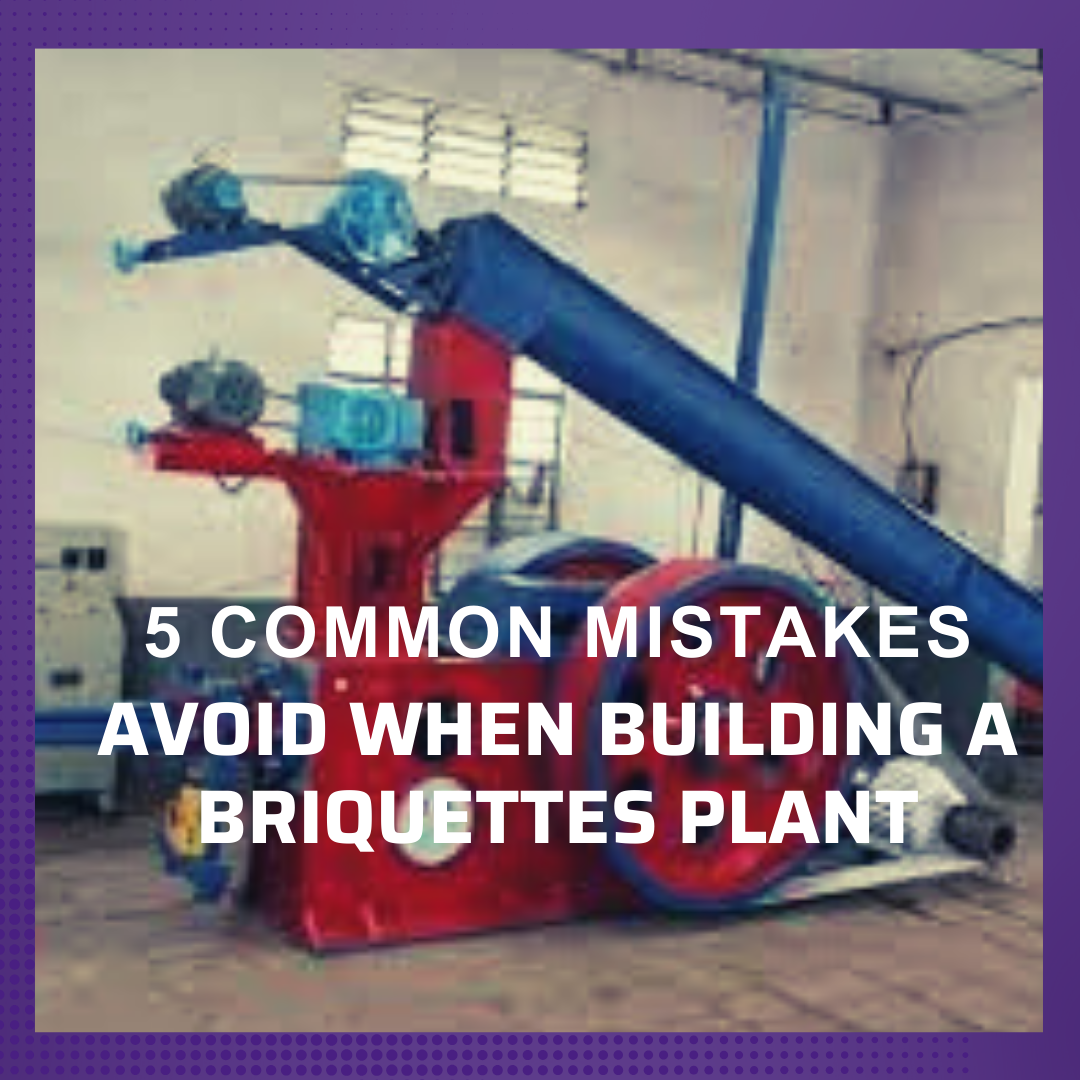Setting up a briquettes manufacturing plant is an extensive process that must be planned properly to avoid pitfalls. Do not underestimate the importance of raw material preparation. Proper shredding, drying, and consistent material size are crucial to producing high-quality briquettes. Choose equipment carefully and work closely with manufacturers to ensure the machines match your specific needs.
Mistake #1 – Inadequate Raw Material Assessment
Mistake #2 – Undersizing Briquetting Equipment
To keep costs lower, some businesses undersize the briquetting presses, dryers, and other equipment when designing their Briquettes Plant. This restricts full-scale production capacity for the Briquettes Plant from startup.
Size reduction and drying capacity must align with your briquetting press output to avoid bottlenecks. Plan for future growth by installing higher-capacity equipment with room for increased volumes. This prevents costly upgrades down the line.
Mistake #3 – Poor Briquettes Plant Layout
Inefficient plant layout leads to sloppy material flow and higher labor costs. Raw materials must smoothly flow from intake to storage, then to size reduction, drying, briquetting presses, and finished briquette storage with minimal handling.
Any bottlenecks or backflows in the material movement through your plant limit production. Design the layout for linear, logical flow between connected work areas. Consult experienced briquetting experts on plant design.
Mistake #4 – Ignoring Environmental Factors
You must identify and address environmental factors related to your briquette plant right from the design stage:
- Noise control features to meet local decibel regulations
- Dust collection systems to prevent particulate emissions
- Wastewater treatment for any effluent discharge
- Safety mechanisms like fire detection and explosion vents
Non-compliance to environmental norms can halt production. Allocate sufficient budget to the safety, health, and ecological aspects of the plant.
Mistake #5 – Lack of Pilot Trials
Jumping straight into full-scale briquetting without proper pilot trials is risky.
Conduct extensive testing first using rented equipment or small presses to:
- Assess the equipment capacity needed for your output goals
- Evaluate different briquetting parameters on your raw materials
- Analyze the quality and characteristics of the briquettes produced
- Gauge automation, skill, and manpower required
- Project maintenance needs and costs more accurately
Pilot trials reveal changes needed in your briquetting process before large investments. They enable making modifications early on and avoiding mistakes.
Conclusion
Establishing a briquettes plant requires substantial capital investment and advance planning. Avoiding common pitfalls around raw material availability, equipment sizing, plant layout, environmental aspects, and pilot trials is key to optimizing success. Partnering with experienced briquetting experts provides valuable guidance. With meticulous planning and adaptive project execution a profitable.




